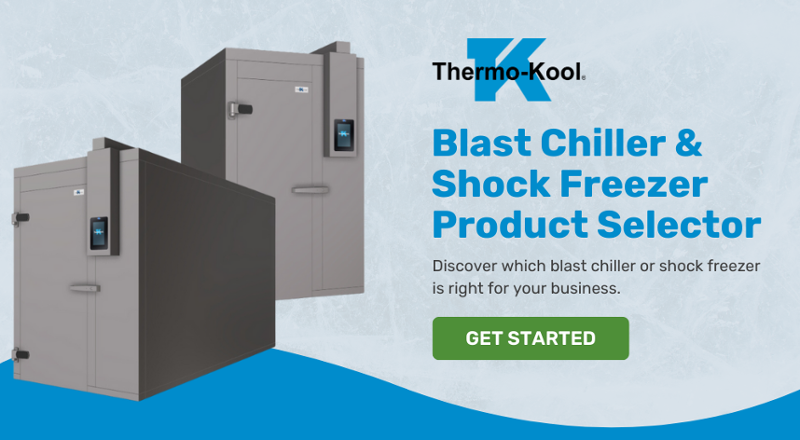
Foodservice operators are no strangers to overcoming challenges in the kitchen. However, the most notable obstacle preventing a smooth business model in recent years is a lack of trained workers. Since the pandemic, a labor shortage has stifled the entire industry, and it still hasn't bounced back.
Fortunately, operators don't have to settle for a backlogged and understaffed kitchen. Instead, they can invest in high-efficiency equipment and procedures, such as Thermo-Kool blast chillers, which allow kitchens to run smoother with less labor.
Understanding the Restaurant Worker Shortage
As with any socioeconomic issue, the current foodservice labor shortage didn't happen in a vacuum. While the COVID-19 pandemic devastated the industry, it also exposed cracks in the system that have yet to heal.
The foodservice industry was one of the hardest hit during the early days of the pandemic, as restaurants had to shut down or rethink their operations temporarily. Even as lockdown procedures loosened, most businesses couldn't return to full staff, thanks to social distancing protocols limiting the number of guests. Many restaurants also avoided dine-in seating for months and only focused on takeout services, meaning the majority of staff weren't needed.

This break caused foodservice workers to reassess their job prospects, and many of them decided to switch career paths. This mass migration from food to other industries is still being felt today, with 163,000 fewer jobs in the industry being filled in December 2023 compared with February 2020.
Another crack in the system is the conflict between higher wages and lower prices. As a rule, customers want low-cost, value food options. However, higher wages mean operators have higher labor costs, meaning their profit margins shrink even further. So, filling a kitchen with the same number of employees costs more, making it harder to run a profitable business.
Navigating the State of the Restaurant Labor Shortage
Thankfully, while the industry struggles to return to pre-pandemic staffing levels, consumer demand is still high. Even as prices increase, customers are still going out to eat regularly. While this spending and economic solvency level isn't likely to last forever, it gives operators some breathing room.
That said, there could be some shake-ups in 2024. For example, California is enacting a new bill that forces quick-service restaurants (QSRs) that have more than 60 locations nationwide to raise their minimum wage to $20, which will take effect on April 1st. While it's unclear what kind of ripple effect it will have on the industry, it'll likely be a game-changer.
Also, there will eventually come a time when consumer spending starts slowing down. Whether that will happen in 2024 is anyone's guess, but once it does occur, operators will have to trim costs and reinforce their bottom lines.
Labor Solutions in the Hiring Crunch: Thermo-Kool Blast Chillers to the Rescue
One of the best ways for operators to streamline their kitchens and reduce the impact of an industry-wide labor shortage is to invest in high-efficiency equipment. Fortunately, a commercial blast chiller from Thermo-Kool offers an incredible ROI and allows operators to do more with fewer people.
A blast chiller helps cool food down much faster than a traditional cooler by using chilled air to bring food quickly out of the danger zone. This ensures better food safety and quality and protects ingredients, customers, and the operator.
But how does a commercial blast chiller help reduce costs? First, operators don't have to worry about human errors by automating the chilling process. The chiller handles the work even during a busy rush, so there's less food waste.
Second, preparing foods in bulk with batch cooking is much easier. Since the chiller can maintain consistent temperatures, chefs and workers can prep more dishes ahead of time, enabling the kitchen to work faster during a rush. Overall, operators can scale up their food production by investing in equipment like blast chillers without worrying as much about wasted food or time.
Not sure which blast chiller or shock freezer can help your foodservice business increase profits? Find out with our online product selector:
